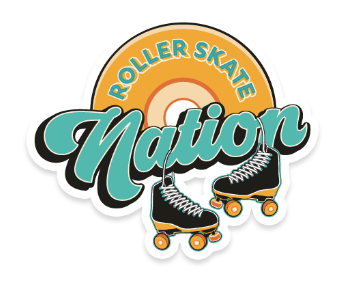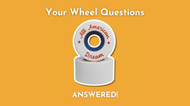Wheels 101: How to Find the Best Roller Skate Wheels
There are many styles of roller skating (rhythm, shuffle, jam, roller derby, speed, etc), and there are even more different types of roller skate wheels. There are wheels with certain styles of skating in mind, there are some that are just generic. We will go over some of the main categories of wheel differences.
Size:
Wheel height (diameter) and width are measured in millimeters and will be indicated with the abbreviation "mm". If you skate a certain style of skating it is always a good idea to check with fellow skaters of that style to see what size they prefer, this can usually be a good guide for helping you choose the right size for you.
Wheels used for quad skates range from approximately 47mm to 70mm in diameter. Large wheels make it easier to maintain a speed and are better for long distances (such as for fitness skating or speed skating), but smaller wheels are better for quick maneuvers (such as for figure skating or roller dancing).
Inline skate and rollerblade wheel sizes range from approximately 60mm-125mm.
Hardness:
Wheel hardness is measured as durometer, and is listed as a number with an "A" behind it, such as "93A". The higher the number, the harder the wheel is and the less grip it has.
Rink floors require a harder wheel, ranging from 90A-103A. A wheel with a durometer of 103A has virtually no grip. This is preferred in many styles of dance skating to make it easier to glide your wheels.
For outdoor skating a softer wheel is needed. The softer the wheel the more your wheels will absorb shock as you roll over cracks and small debris. Most skaters look for a wheel hardness around 78A for outdoor skating.
"Hybrid" wheels which can be used indoors or outdoors usually come in a durometer around 85A, and are typically what is found on kid's skates and some beginner skates.
Hubs:
The main styles of hubs are nylon or aluminum hubs. Nylon is of course typically a lighter material, and so most common in skate wheels.
The charm of an aluminum hub roller skate wheel is that it will be less likely to have “give” to it. This can be important with a skater of larger size, or if wheels will be for long term use. Many skaters change wheels frequently so they do not need them for years, but if this is the case for you, it might be best to invest in aluminum hub wheel.
There is one cross between the two, the wheel that has a true nylon hub, with an alloy insert. This is to help the hub last longer, but without as much weight as a completely aluminum hub would give.
Please note for installing bearings in Aluminum hubs:
The hubs have very tight tolerance and aluminum doesn't stretch. So, it's very important the bearing is installed straight. If the bearing stops going in, it's normally a sign the bearing is crooked. When that happens, normally you can see one side of the bearing higher than the other. If that’s the case, you should apply pressure to the high side or remove the bearing and try again.
If the bearing goes in crooked, it will knurl the side of the hub, causing a ridge. The harder you force it, the more damage it will cause. Do not force bearings into an aluminum hub. Bearing oil can help with that as well!


